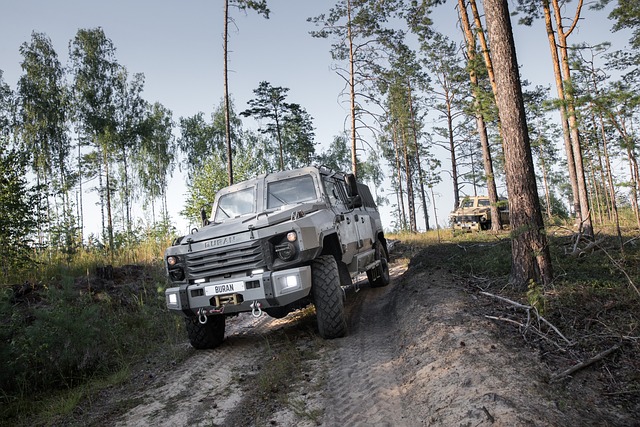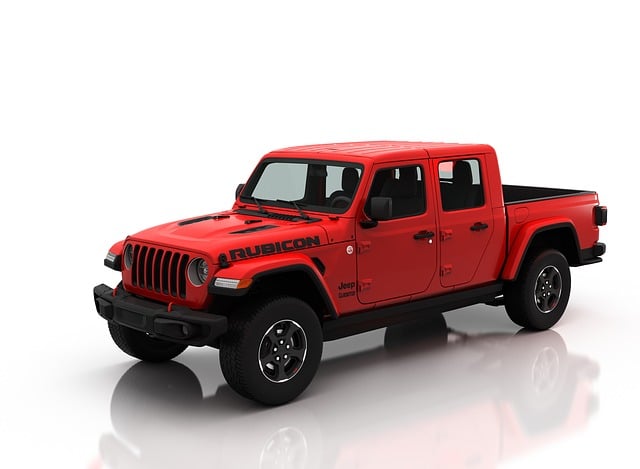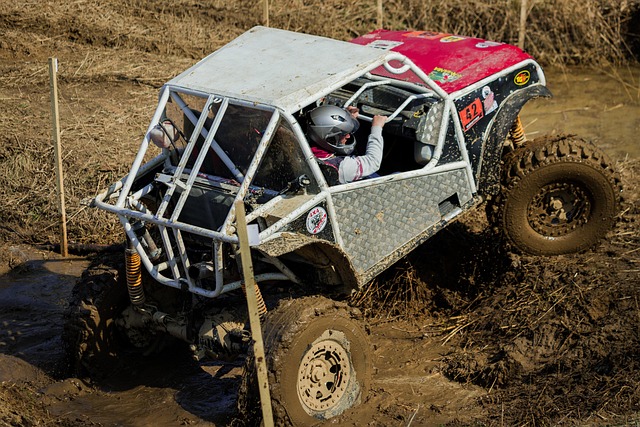Brake pads are essential for 4×4 safety and performance in off-road conditions. Organic pads offer quieter rides, while metallic pads excel in heat dissipation and high-performance stopping. Regular inspections, early issue detection, and prompt addressing ensure brake longevity during adventures. Replacing pads on Brownsville's rugged trails requires a meticulous approach, prioritizing safety and performance with the right tools and techniques. Selecting high-quality pads suited to your 4×4's purpose and driving style enhances off-road safety and efficiency.
In the rugged terrain of Brownsville, off-road adventures are a way of life. To ensure safe and reliable navigation through challenging trails, understanding brake pads is crucial. This guide offers essential tips for overland 4×4 repair in Brownsville, delving into the function and types of brake pads suitable for 4x4s. We’ll also detail common issues, provide a step-by-step pad replacement guide, and highlight factors for choosing the right pads to optimize performance on Brownsville’s demanding trails.
- Understanding Brake Pads: Function and Types for 4x4s
- Common Issues: Identifying Wear and Tear in Overlands
- Step-by-Step Guide: Replacing pads in Brownsville's Off-Road Trails
- Choosing the Right Pads: Factors for Optimal 4×4 Performance
Understanding Brake Pads: Function and Types for 4x4s

Brake pads play a critical role in the overall performance and safety of 4×4 vehicles, especially when venturing into challenging off-road terrain. Understanding their function and various types is essential for anyone looking to master tips for overland 4×4 repair in Brownsville or any other rugged adventure.
In simple terms, brake pads are components that make direct contact with the rotor during braking, converting kinetic energy into heat and slowing down the vehicle. For 4x4s, where weight distribution and stopping power vary significantly depending on terrain, choosing the right pad type is crucial. There are typically two main types: organic (non-asbestos) and metallic. Organic pads offer a smoother, quieter ride but may not perform as well in extreme conditions, while metallic pads provide superior heat dissipation and high-performance stopping power, making them ideal for demanding off-road use.
Common Issues: Identifying Wear and Tear in Overlands

Overland 4×4 enthusiasts in Brownsville often face unique challenges when it comes to brake pad maintenance, especially due to the diverse terrain they navigate. Identifying wear and tear early is crucial for safe and efficient drives. One of the most common issues is excessive wear on one side of the pads, which could indicate an unevenly worn out brake system—a symptom of misaligned wheels or a problem with the caliper itself.
Regular visual inspections can reveal telltale signs like pad thickness variations, corrosion, or cracks. Tips for overland 4×4 repair in Brownsville include carrying a basic toolkit with a measuring gauge to check pad thickness and being mindful of any unusual noises during braking, which could point to worn-out pads. Staying vigilant and addressing these issues promptly is key to ensuring the longevity of your vehicle’s brakes on adventurous trips.
Step-by-Step Guide: Replacing pads in Brownsville's Off-Road Trails

Replacing brake pads on your 4×4 in Brownsville’s rugged off-road trails requires a systematic approach to ensure optimal performance and safety. Here’s a step-by-step guide tailored for overland adventures:
1. Safety First: Park your vehicle on a level surface, engage the parking brake, and place wooden chocks behind the wheels for added security. Ensure you’re in a well-ventilated area due to potential dust exposure.
2. Tool Gather: Assemble all necessary tools including jack, jack stands, new brake pads, socket set, wrenches, and protective gear. Consult your vehicle’s manual for specific part numbers.
3. Lift and Support: Use the jack to lift the vehicle, then secure it with jack stands for stability. Accessing the brakes might require removing wheel arch liners or fender well covers.
4. Remove Calipers (if necessary): Depending on your 4×4’s design, you may need to detach the caliper from the brake rotor using specialized tools or by carefully applying force while keeping the pad in place.
5. Inspect and Clean: Remove the old pads and inspect both the brake rotors and calipers for wear, damage, or corrosion. Use a degreaser to clean the area thoroughly to ensure optimal pad adhesion.
6. Install New Pads: Align the new pads with the brake rotor’s notches or tabs, then carefully slide them into place. Ensure they are securely seated before moving on.
7. Reassemble and Test: Put back any covers you removed, lower the vehicle, and tighten all bolts to the manufacturer’s specified torque. Test the brakes gently while driving at low speeds to ensure even braking performance.
Choosing the Right Pads: Factors for Optimal 4×4 Performance

When selecting brake pads for your 4×4, considering specific factors is vital for optimal performance during overland adventures in Brownsville or any challenging terrain. The right pads can enhance braking efficiency, ensuring better control and safety. One crucial aspect is understanding your vehicle’s purpose and driving style. Off-road enthusiasts often require pads designed to withstand intense heat and frequent use, offering aggressive stopping power without compromising on wear life.
Tips for overland 4×4 repair in Brownsville include opting for high-quality pads with advanced friction materials that provide consistent braking performance across different temperatures. Additionally, checking the pad thickness and ensuring they are legal for your area is essential. The right pad selection can significantly contribute to a smoother driving experience during your next off-road expedition, allowing you to conquer challenging trails with confidence.
Brake pads are a critical component for safe and efficient off-road driving. By understanding their function, types, and common issues, you can ensure optimal performance during your next adventure on Brownsville’s trails. Following the step-by-step guide provided, along with choosing the right pads based on specific needs, will empower you to tackle any overland 4×4 repair challenges that come your way. Remember, well-maintained brake systems are key to a smooth and secure off-road experience.
